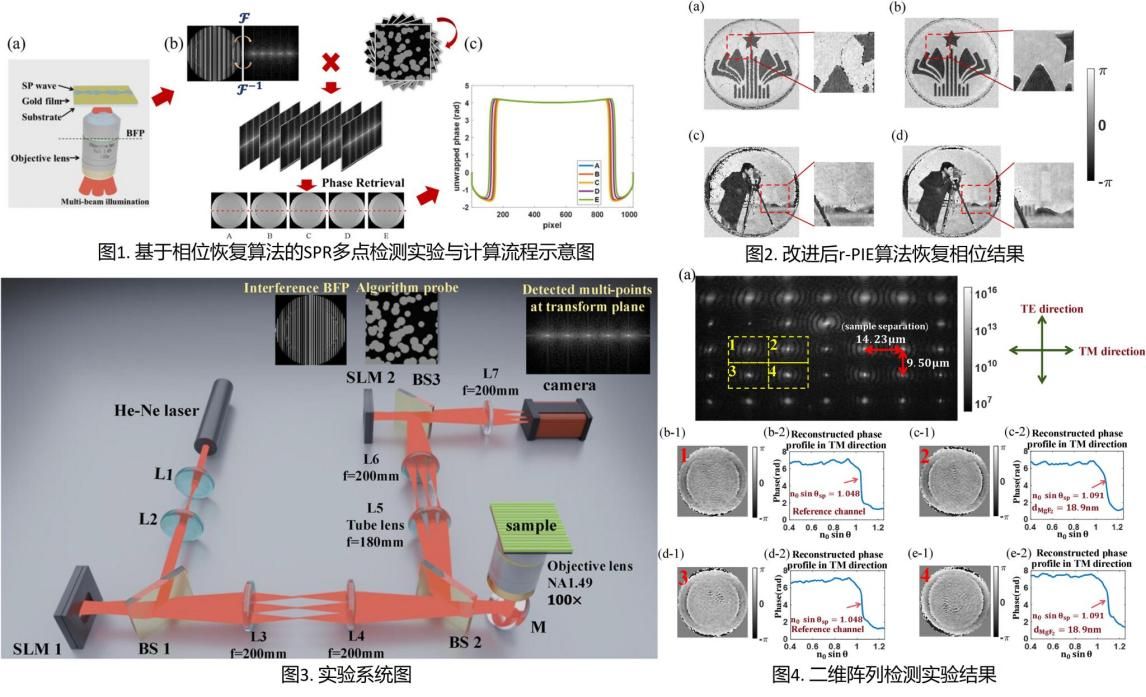Recently, the research team led by Dr. Shen Mengqi from the Department of Engineering at Shenzhen MSU-BIT University published a paper titled Phase-Retrieved High-Throughput Multi-Channel Simultaneous Surface Plasmon Resonance Detection in Laser & Photonics Reviews (IF = 10), one of the top international journals in the field of optics. Dr. Shen is the first author, and Shenzhen MSU-BIT University is listed as the first affiliation.
Surface Plasmon Resonance (SPR) is a highly sensitive optical sensing technique that enables real-time and label-free monitoring of biomolecular interactions. Due to its unique advantages, SPR has been widely applied in biomedicine, environmental monitoring, and food safety. By detecting variations in resonance conditions caused by molecular binding, SPR sensors provide a direct optical readout of biomolecular interaction events. As biological research and clinical diagnostics become increasingly complex, sensing technologies face higher demands—not only for greater sensitivity and the ability to detect weak molecular interactions, but also for higher throughput and parallel detection capabilities, enabling the acquisition of high-density information.

In this study, the team constructed and experimentally verified a phase-type SPR sensing system that achieves high sensitivity, wide dynamic range, and ultra-high throughput. The system combines an objective-based optical coupling configuration with a rotational ptychographic phase retrieval algorithm (r-ePIE), offering a feasible pathway to overcome the long-standing throughput bottleneck in phase-type SPR development. This approach effectively resolves common issues in conventional systems, such as complex optical structures, stringent alignment requirements, throughput limitations due to prism-based designs, and sensitivity to noise and environmental drift. The r-ePIE algorithm enables high-precision phase reconstruction from as few as two input images, significantly reducing computational load while maintaining strong robustness against environmental fluctuations and optical aberrations. By introducing a pseudo-random phase mask, the system achieves high dynamic range and high-throughput phase information extraction. A three-step test sample with 23.7 μm line width and 0–28 nm height range was fabricated for experimental validation. The reconstructed thickness closely matched measurements obtained by a surface profilometer, confirming the system’s accuracy and reliability. Performance tests demonstrated minimum detection intervals of 14.23 μm along the SPR propagation direction and 9.50 μm perpendicular to it, with a single-measurement sensitivity of 4.90 × 10⁻⁶ RIU, achieving the highest throughput density reported to date in the field of SPR sensing. These results have reached the intrinsic multi-channel detection limit defined by the in-plane propagation length of SPR, free from structural or design constraints. Compared with conventional intensity-based or interferometric SPR methods, this system exhibits superior stability, accuracy, and engineering feasibility, marking a two-order-of-magnitude breakthrough in throughput density. This achievement lays a solid foundation for the next generation of high-throughput SPR sensing technologies.
Original publication: https://doi.org/10.1002/lpor.202501627